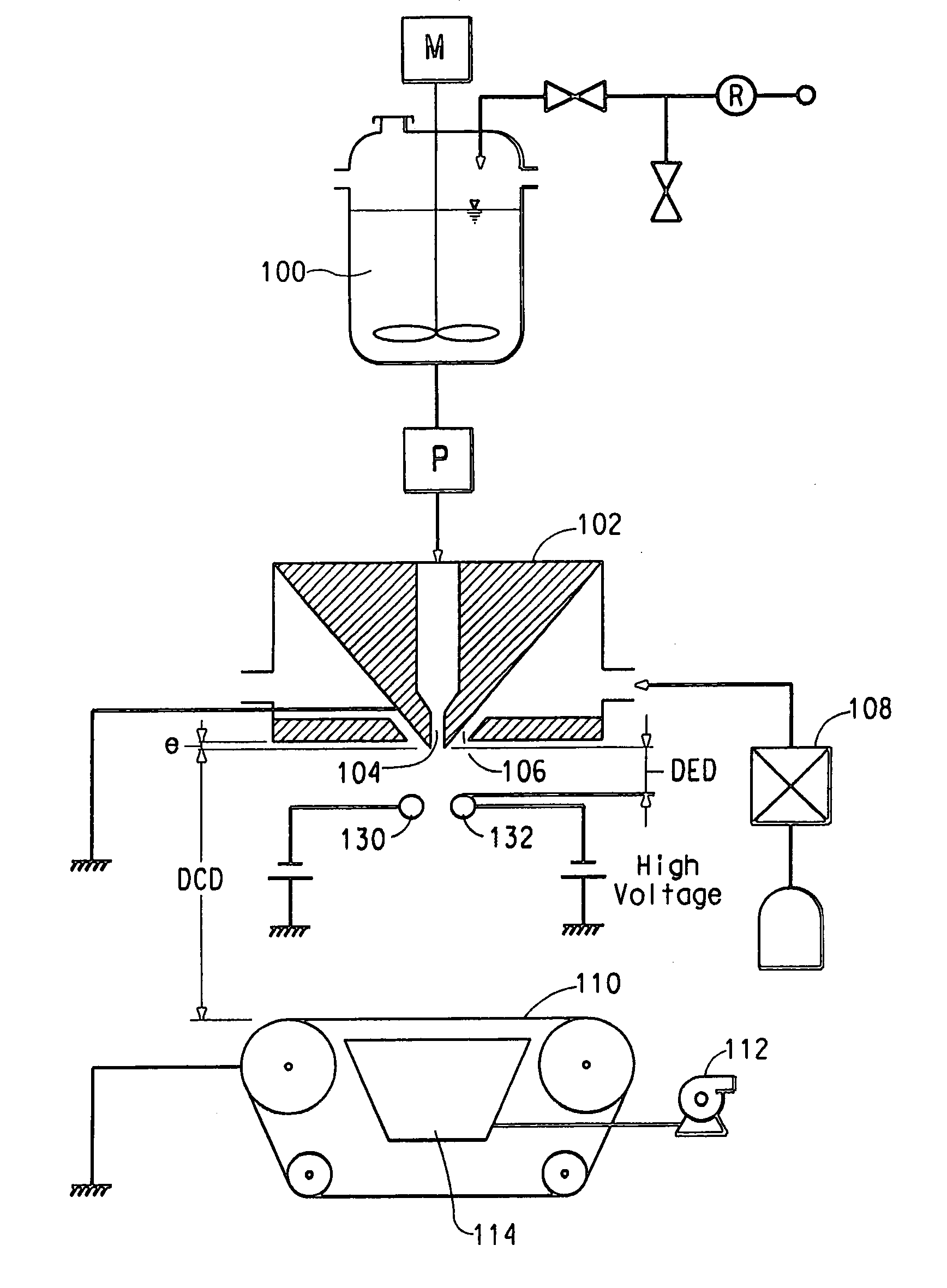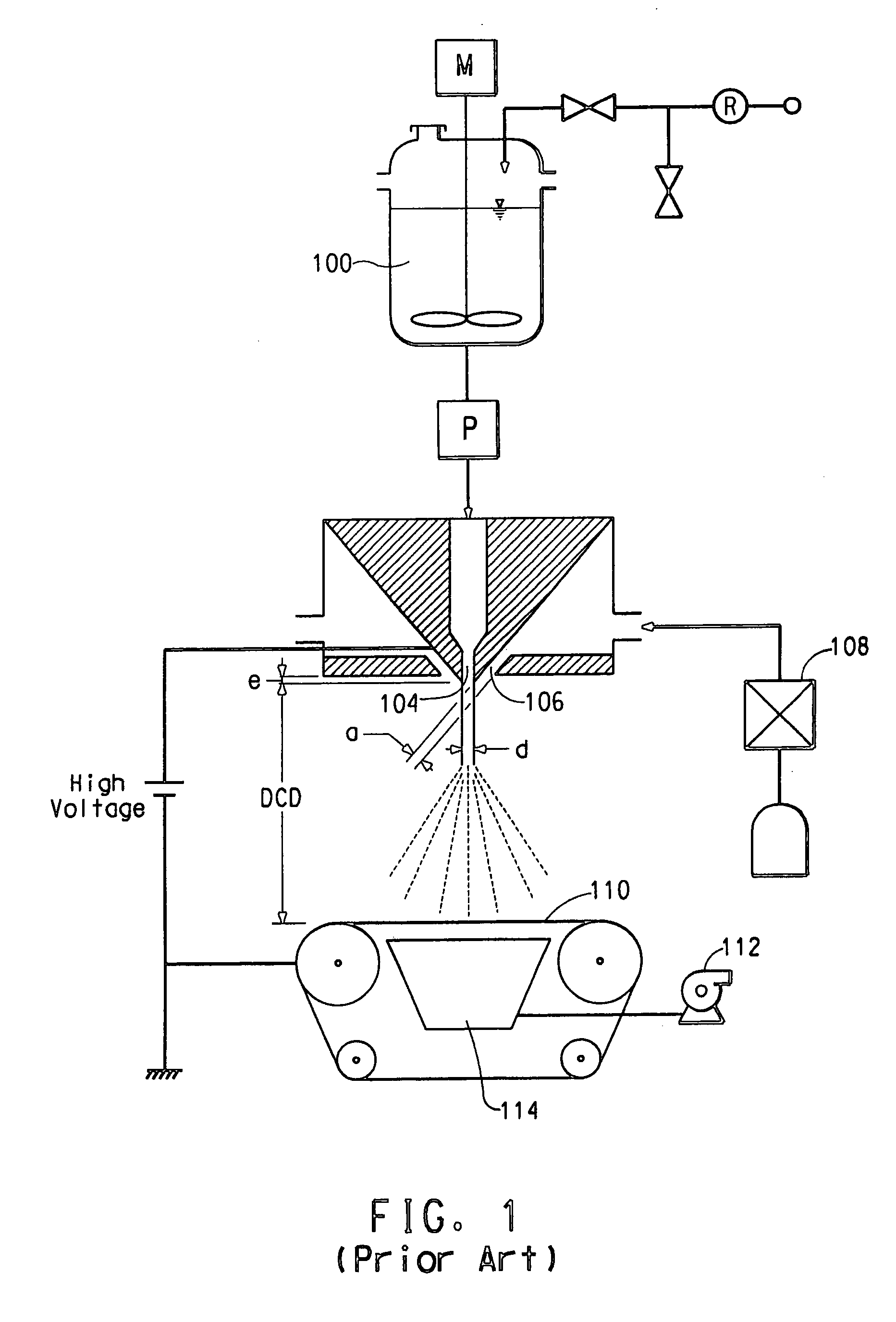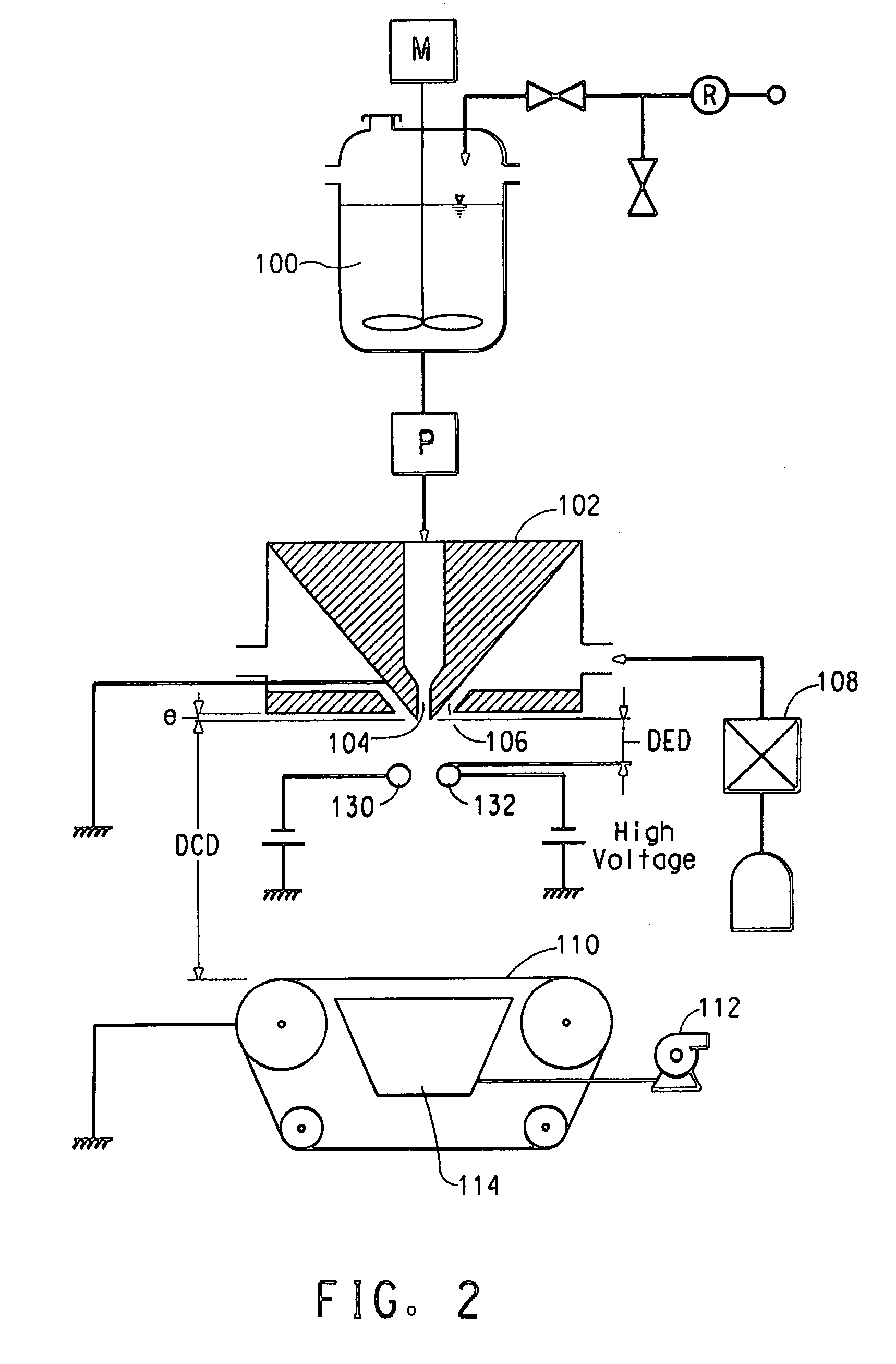Fiber charging apparatus
a charging apparatus and fiber technology, applied in the direction of filament/thread forming, fibre treatment, manufacturing tools, etc., can solve the problems of physical interruption of process solution and/or solvent supply, insufficient voltage potential of the pack, and extremely difficult to meet the insulation requiremen
- Summary
- Abstract
- Description
- Claims
- Application Information
AI Technical Summary
Benefits of technology
Problems solved by technology
Method used
Image
Examples
example 1
[0045] A polyvinyl alcohol (PVA), Elvano® 85-82, available from DuPont was dissolved in deionized water to make a 10% by weight PVA solution. The solution electrical conductivity was measured to be 493 micro-Siemens / cm using a VWR digital conductivity meter available from VWR Scientific Products (VWR International, Inc., West Chester, Pa.). The solution was spun in a single orifice electroblowing apparatus comprising a 22 gauge blunt syringe needle, in a concentric forwarding air jet. The needle tip protruded 2 mm below the conductive face of the spin pack body. The spin pack body and the spin orifice were electrically grounded through an ammeter, and the PVA solution was directed through a gap between an array of needles charged to a high voltage, which served as the point-electrode and a grounded, cylindrical target-electrode. Process conditions are set forth in the Table, below.
[0046] PVA fine fibers formed via this process were collected on a grounded conductive surface and exa...
example 2
[0047] A 7.5% by weight solution of polyethylene oxide (PEO), of viscosity average molecular weight (Mv) 300,000, obtained from Sigma—Aldrich, was dissolved in deionized water. Sodium chloride (NaCl) at a concentration of 0.1 wt % was added to the PEO solution to increase the solution electrical conductivity. Once the solution was thoroughly mixed, the electrical conductivity was measured to be approximately 1600 micro-Siemens / cm, with the same digital conductivity meter being used as in Example 1. This solution was spun through a single orifice electroblowing apparatus with a 20 gauge blunt needle. The process conditions for this run are listed in the Table, below. The charging method for this run is the same as described in Example 1, utilizing a needle array, which served as the point electrode and a grounded, cylindrical target electrode.
[0048] PEO fine fibers produced during this run were collected on a grounded conductive surface. The average diameters of these fine fibers we...
example 3
[0049] The PEO solution of Example 2 was spun through the single orifice electroblowing apparatus, however the point-electrode geometry was varied. Instead of an array of needles providing the charge, a single wire was used. The solution was directed through the gap between the single wire electrode and a grounded bar, and charged with high voltage. The grounded cylinder served as the target electrode. The conditions used in this run are listed in the Table, below.
[0050] The PEO fine fibers were collected on a conductive surface, which was grounded, and their average diameters were examined under a scanning electron microscope, and the average effective fiber diameter from the wire electrode system was also around 500 nm.
TABLEEx. 1Ex. 2Ex. 3Solution10 wt %7.5 wt % PEO / 0.17.5 wt %PVA / waterwt % NaCl / waterPEO / 0.1 wt %NaCl / waterSolution49316001600Conductivity(uS / cm)Capillary ID (mm)0.41 (22 G)0.6 (20 G)0.6 (20 G)Charging sourceNeedle arrayNeedle ArrayWire and BarSource polarityNegati...
PUM
| Property | Measurement | Unit |
|---|---|---|
| Length | aaaaa | aaaaa |
| Electrical conductor | aaaaa | aaaaa |
| Semiconductor properties | aaaaa | aaaaa |
Abstract
Description
Claims
Application Information
 Login to View More
Login to View More - R&D
- Intellectual Property
- Life Sciences
- Materials
- Tech Scout
- Unparalleled Data Quality
- Higher Quality Content
- 60% Fewer Hallucinations
Browse by: Latest US Patents, China's latest patents, Technical Efficacy Thesaurus, Application Domain, Technology Topic, Popular Technical Reports.
© 2025 PatSnap. All rights reserved.Legal|Privacy policy|Modern Slavery Act Transparency Statement|Sitemap|About US| Contact US: help@patsnap.com



